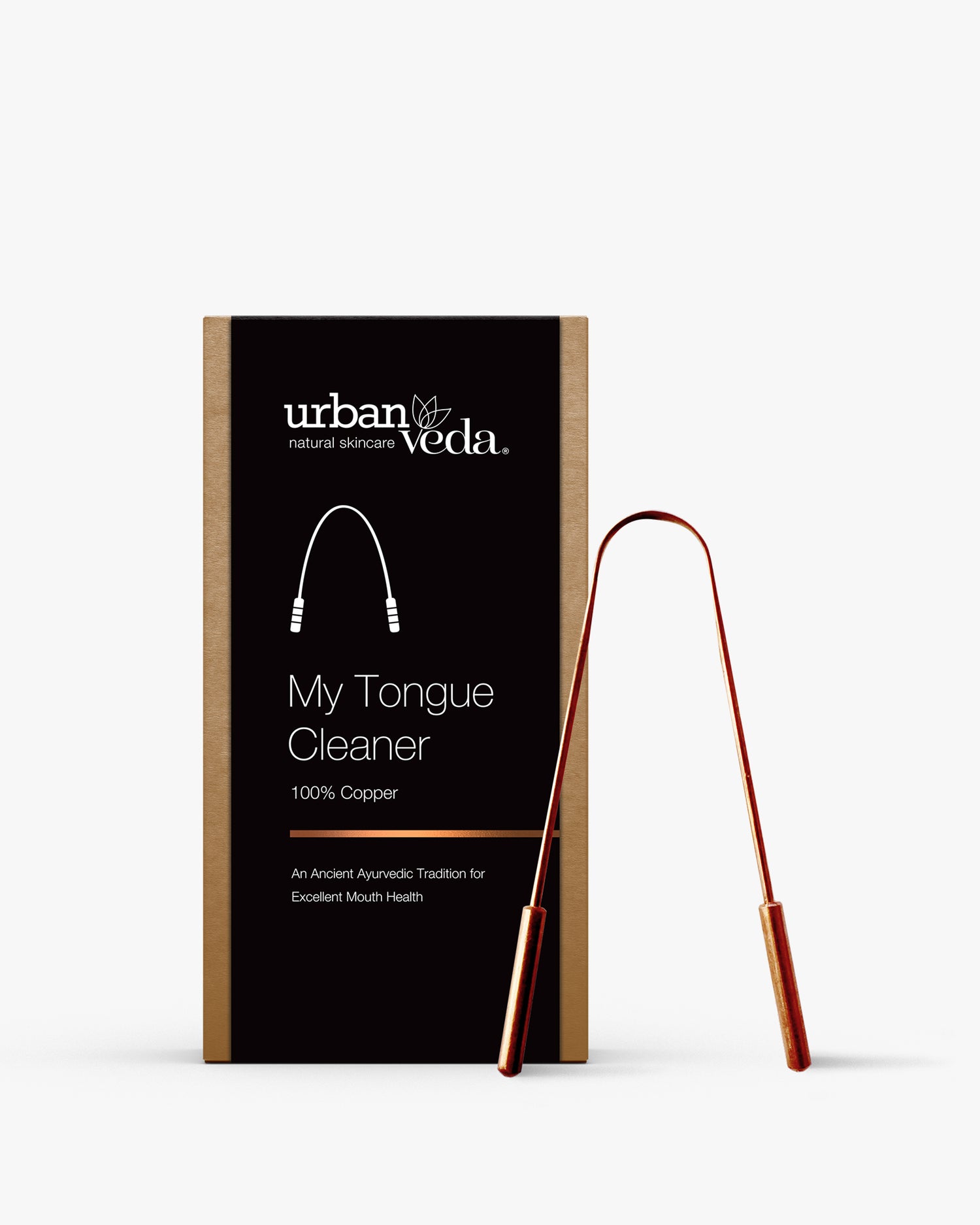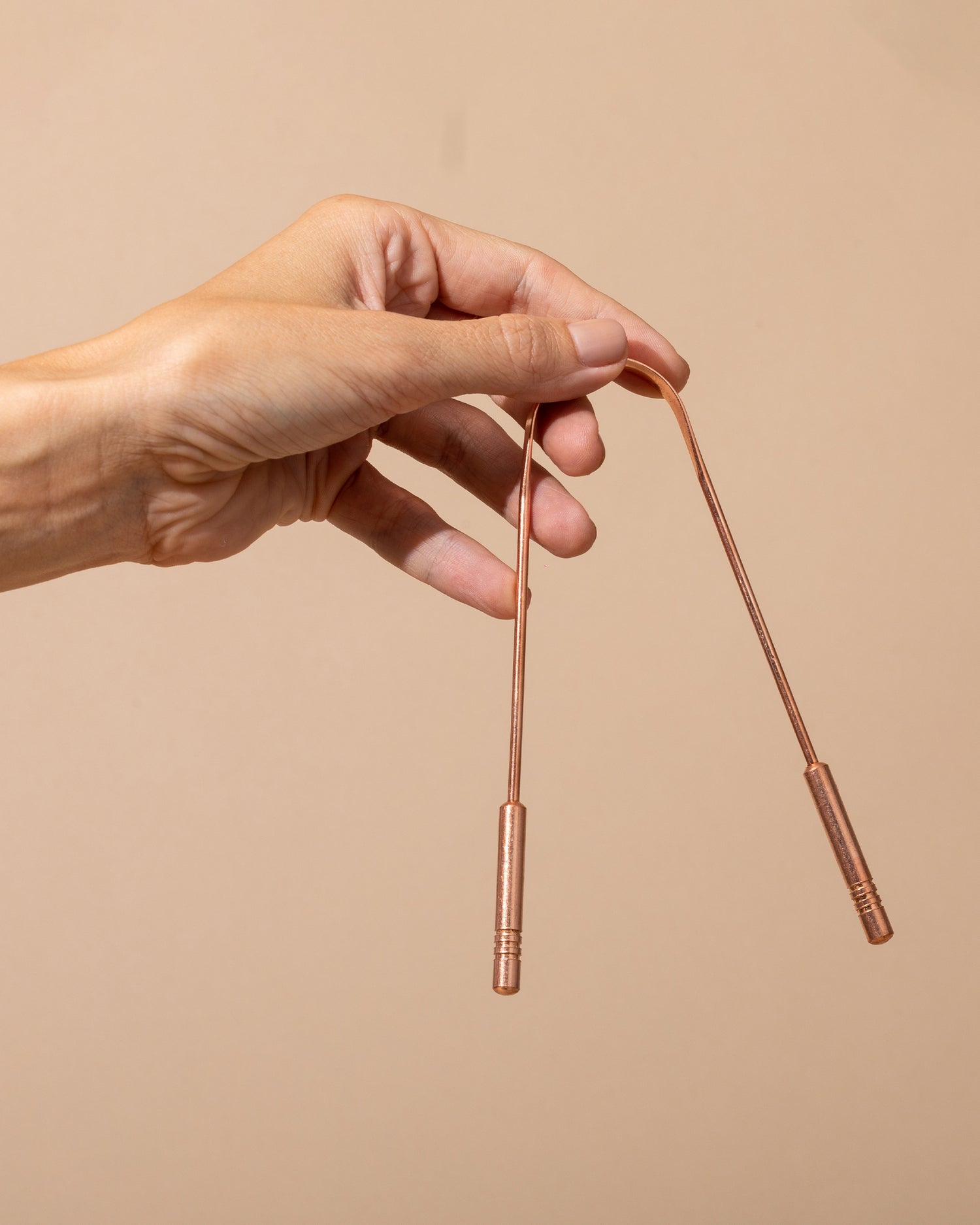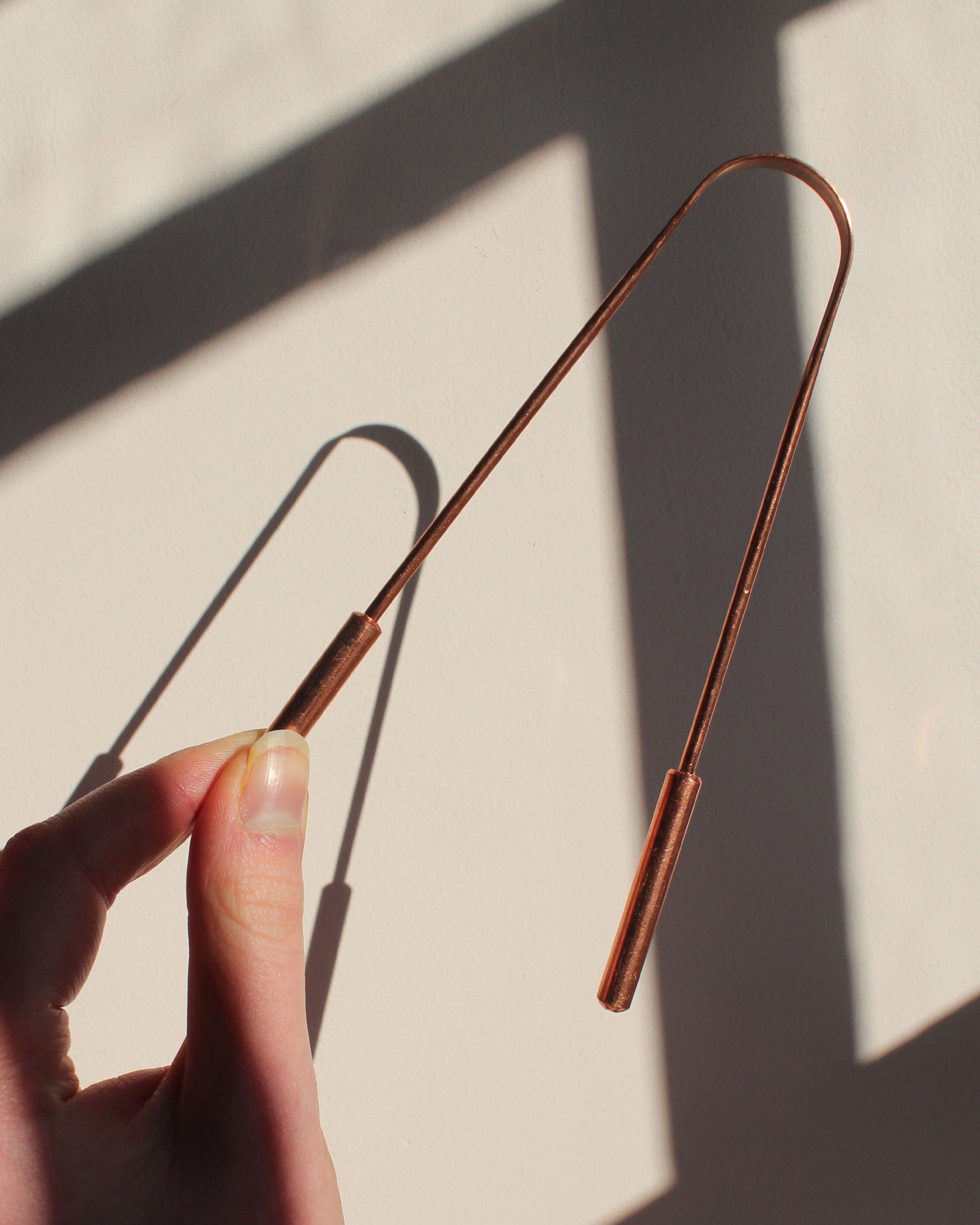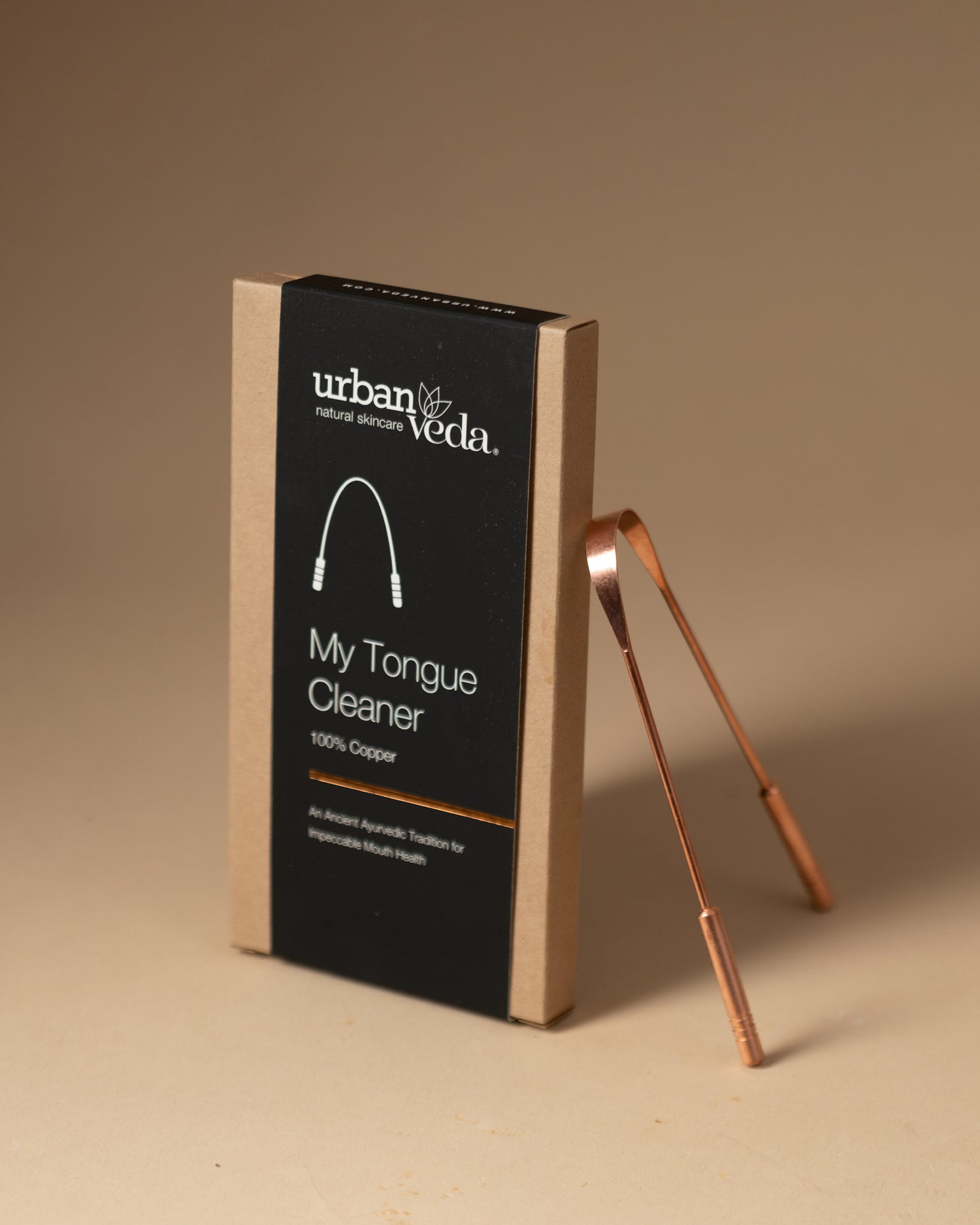Ayurvedic Copper Tongue Scraper
- Regular price
-
£12.00 - Regular price
-
- Sale price
-
£12.00
A practice for over 5,000 years, the time-tested Ayurvedic method of tongue cleaning is a clever and effective approach to oral hygiene. Cleaning your tongue promotes a healthy mouth and gastrointestinal tract, which in turn, leads to a happy gut. Our tongue scraper is made from 100% pure and naturally antibacterial copper. This tool clears and decongests the tongue, freshens breath, heightens taste sensation, and removes toxins – known in Ayurveda as Ama – from the mouth.
Couldn't load pickup availability
How to use
Use first thing in the morning on an empty stomach before brushing your teeth. Begin by guiding the arch over your tongue, starting towards the back and working forwards. Gently glide and lightly pull the tongue cleaner forward and if needed, repeat this process until clean, rinse well each time. Once finished, rinse in hot water and store in a clean, dry place.
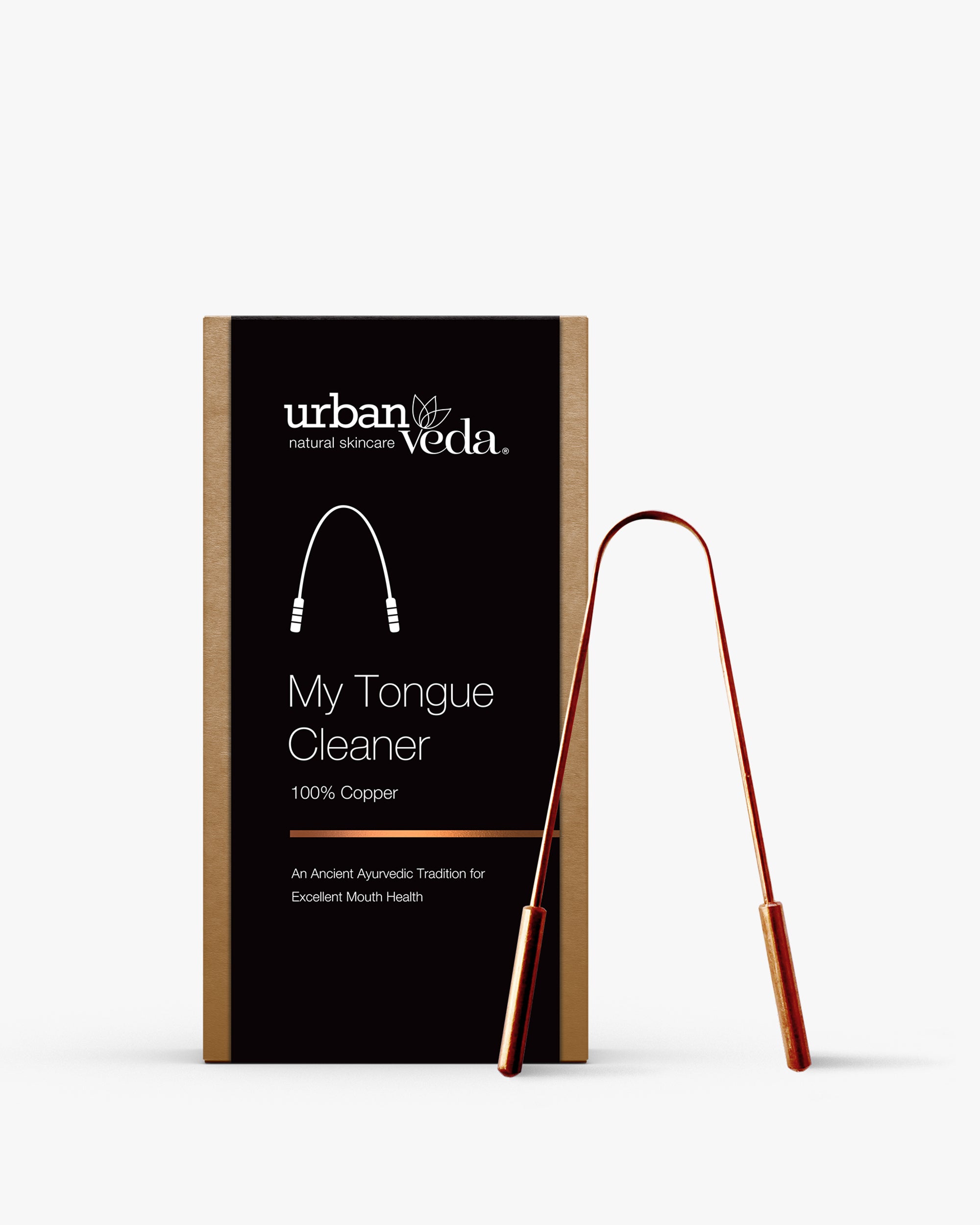
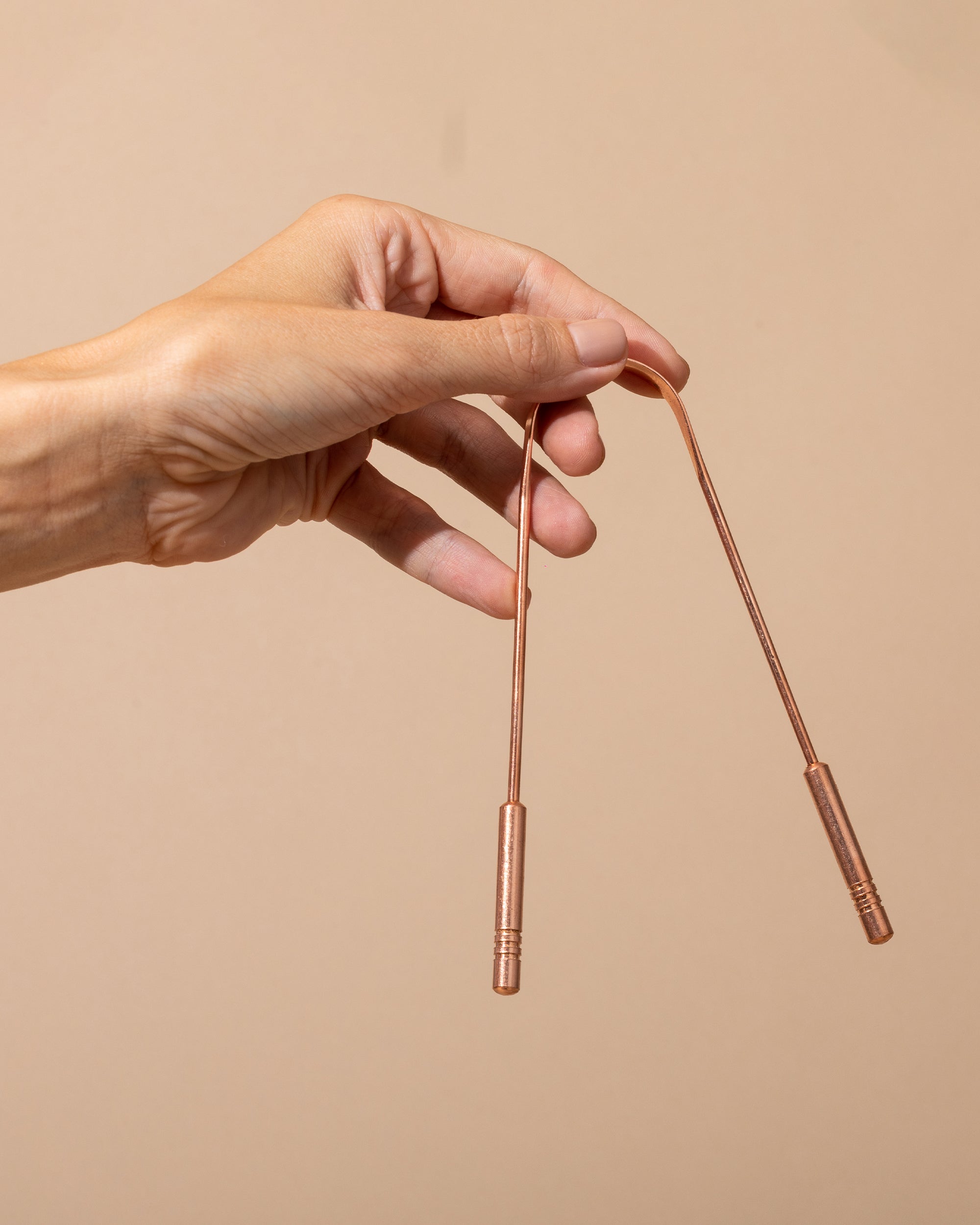
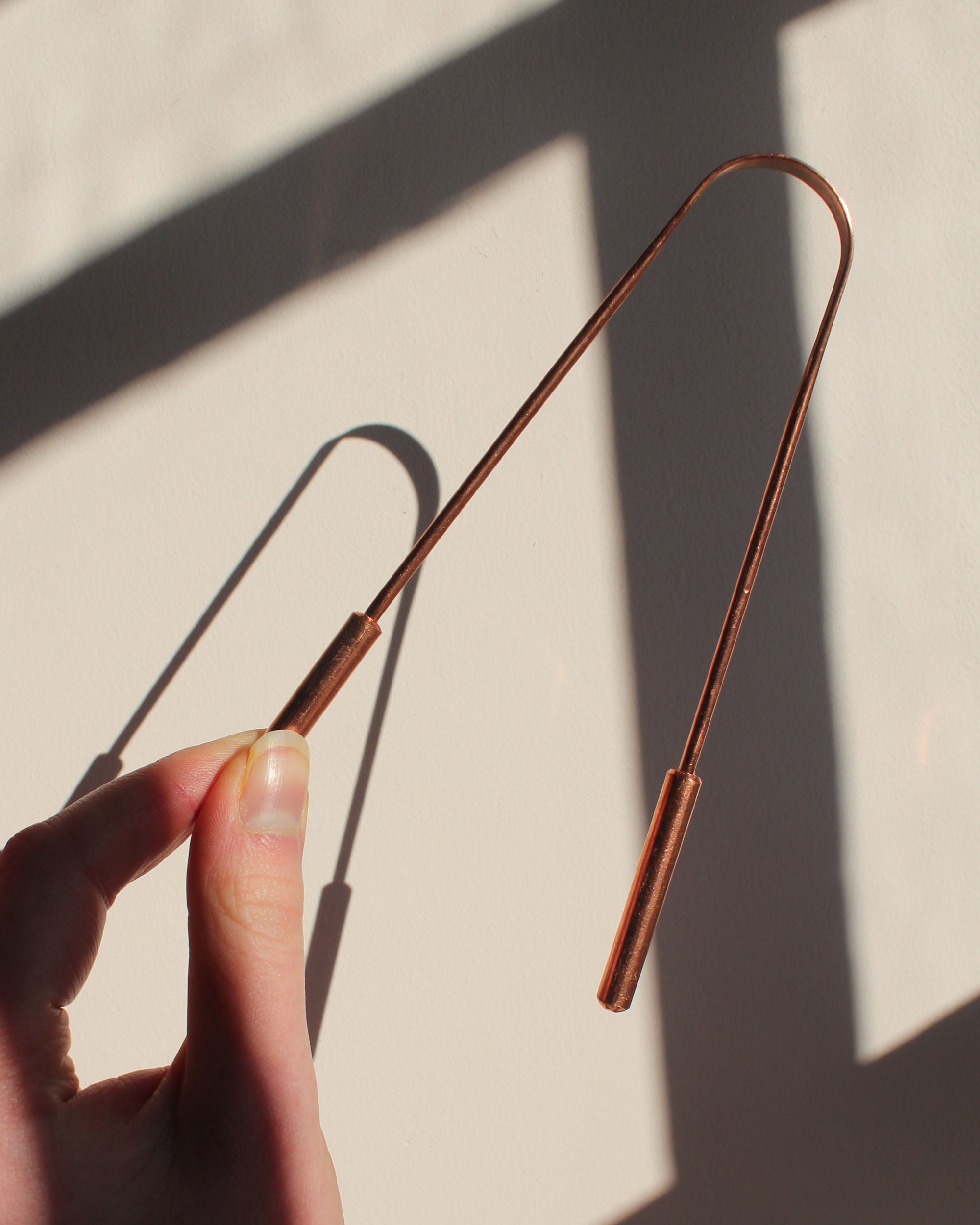
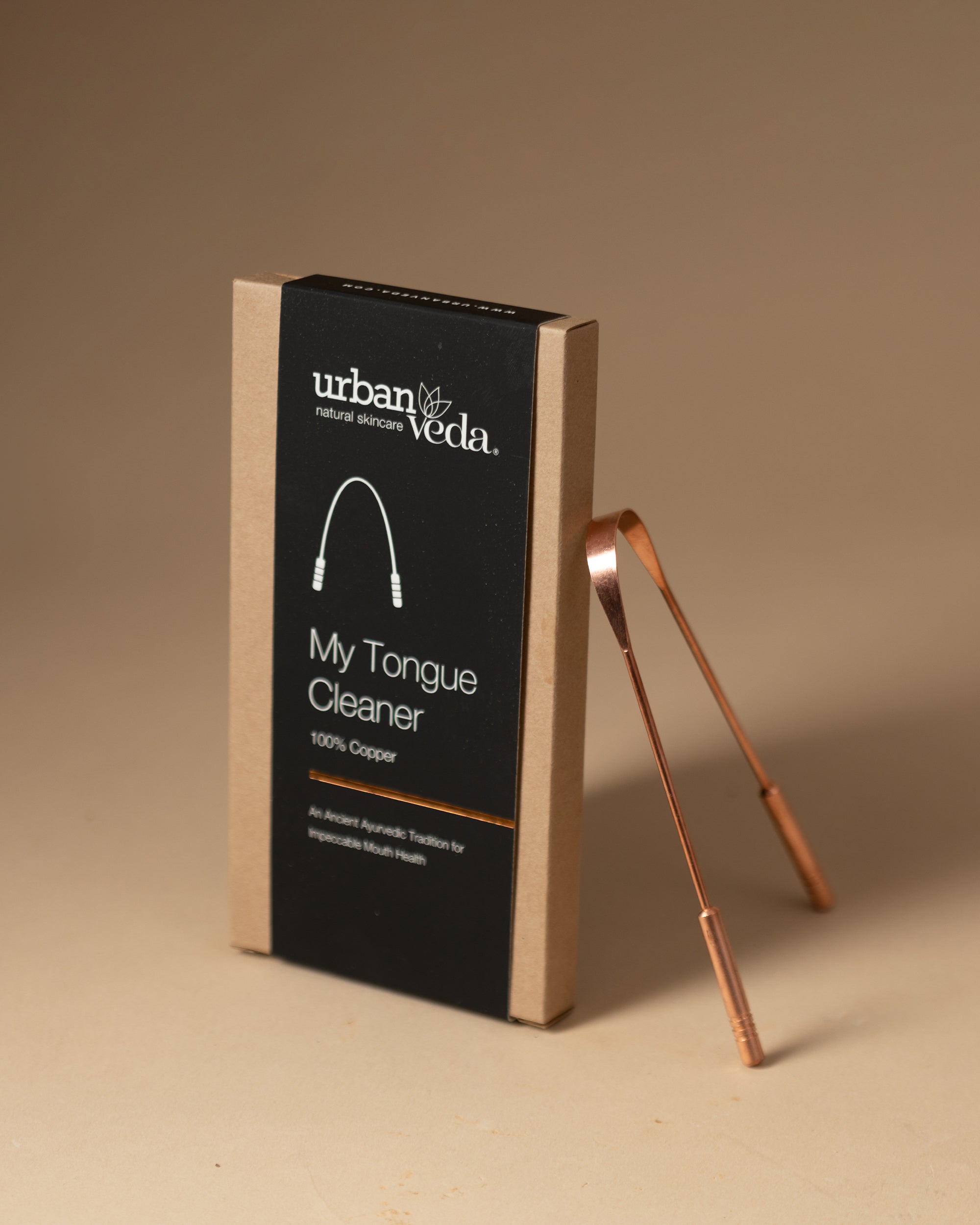

Ayurvedic Copper Tongue Scraper
- Regular price
-
£12.00 - Regular price
-
- Sale price
-
£12.00
We are more than skin deep
-
Cruelty Free
Leaping Bunny & Peta Certifications
-
Carbon Negative Workforce
We offset our carbon emissions through tree planting initiatives
-
Tree planted for every order
Your order is good for yourself & the planet
-
100% Vegan
Independently certified by the Vegetarian Society

